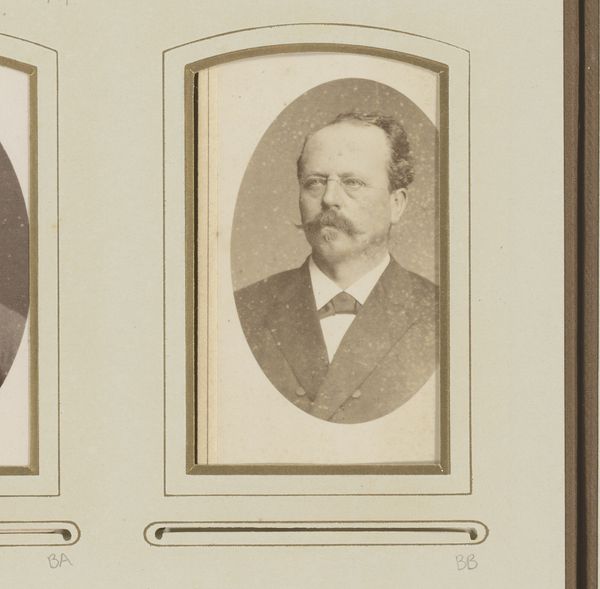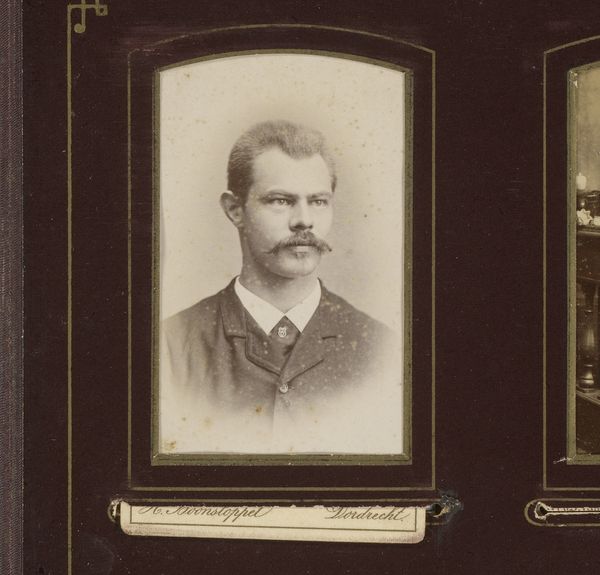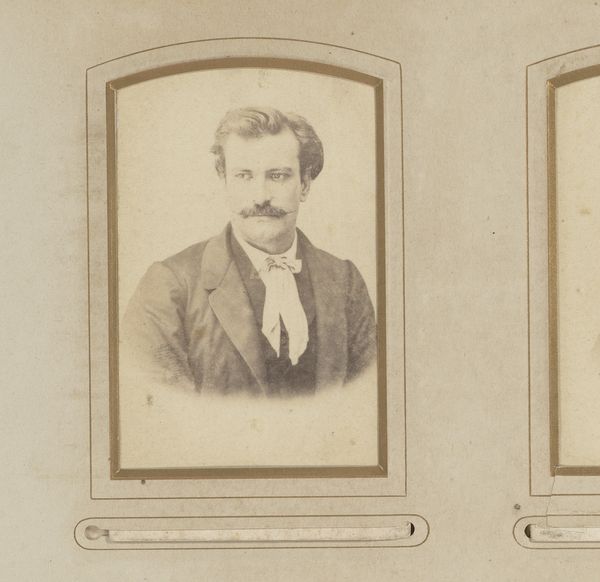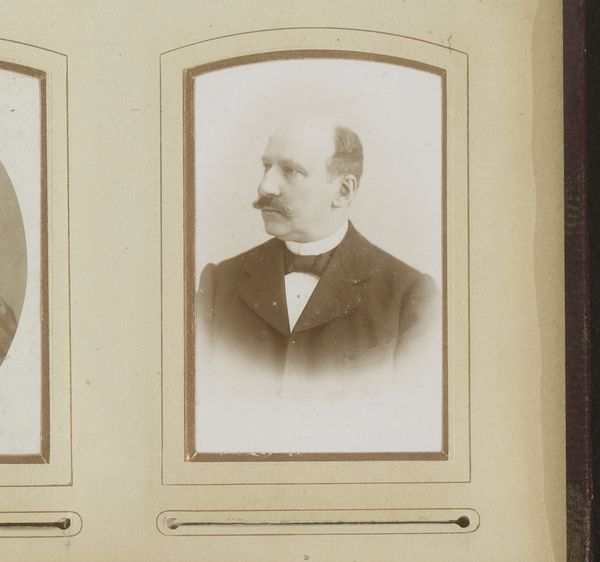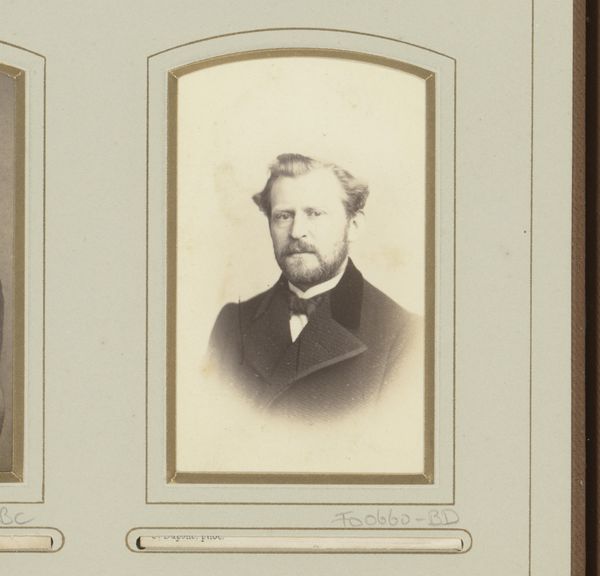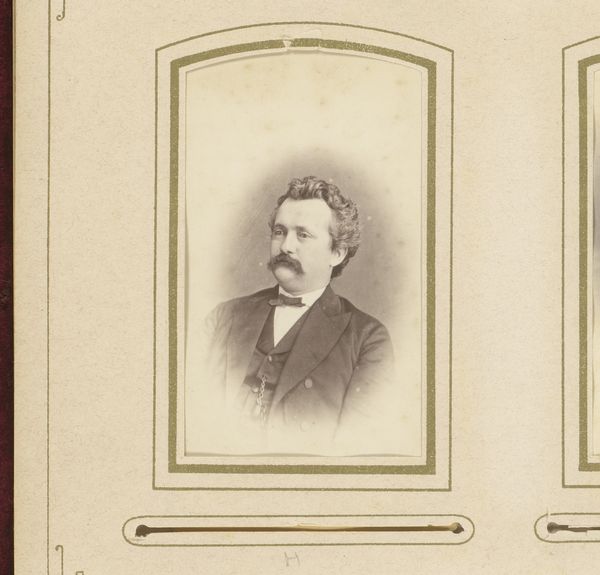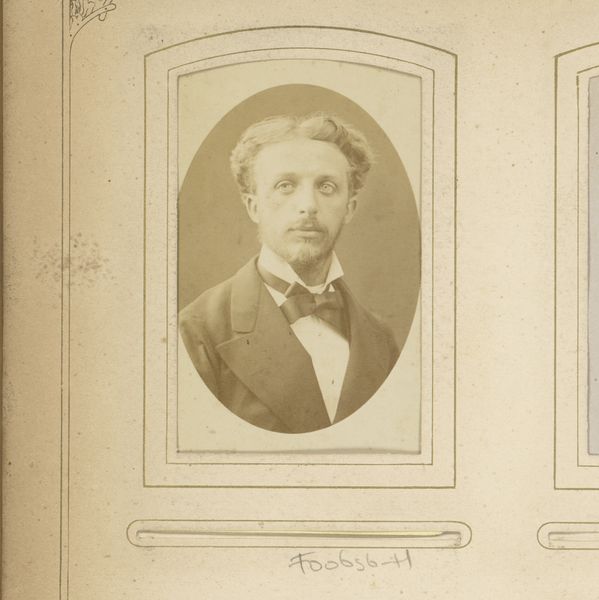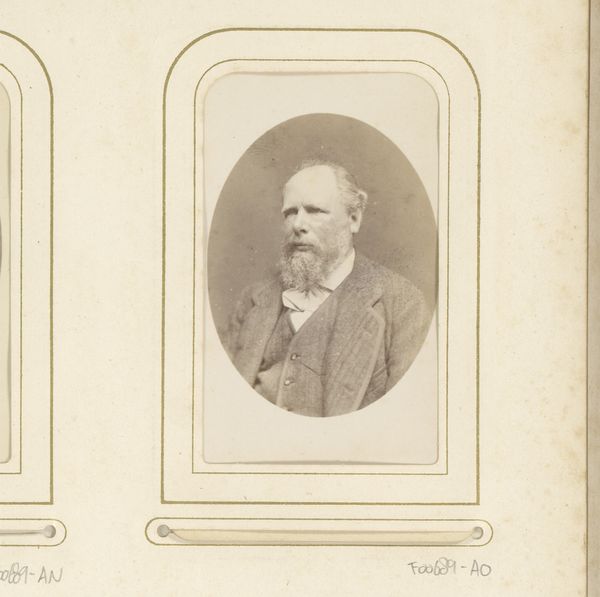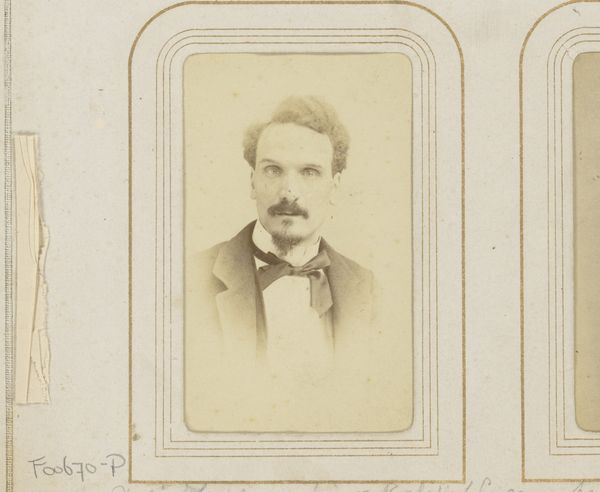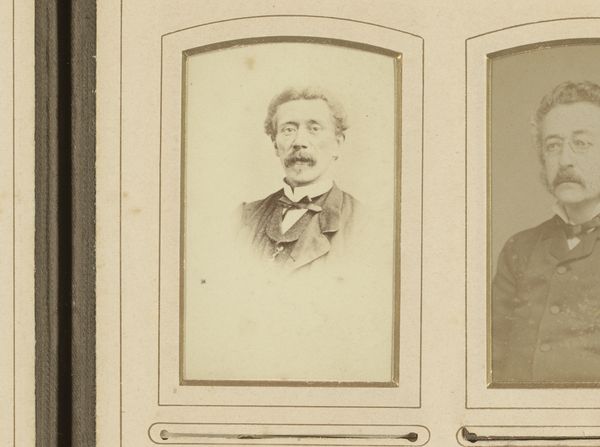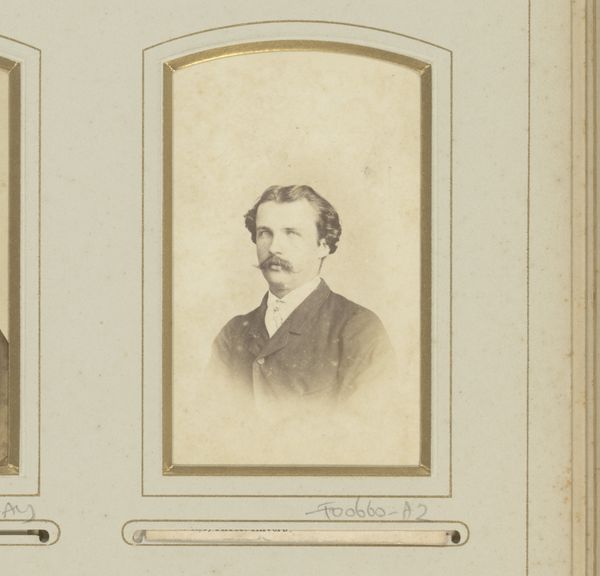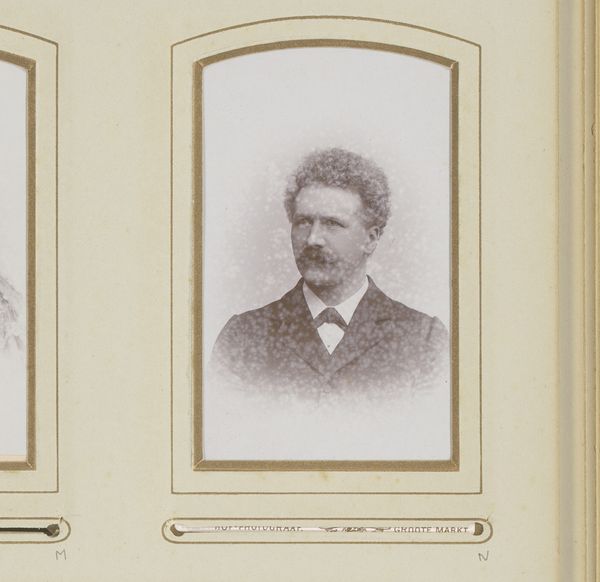
photography, albumen-print
#
portrait
#
photography
#
19th century
#
albumen-print
#
realism
Dimensions: height 82 mm, width 50 mm
Copyright: Rijks Museum: Open Domain
Curator: Ah, here we have an albumen print, "Portret van een man met snor," or "Portrait of a Man with a Mustache," created sometime between 1883 and 1887 by Albert Greiner. It’s part of the Rijksmuseum collection. Editor: What strikes me first is the photograph’s subtle tonality; that sepia wash lends an immediate gravitas to the subject. And the composition! It's remarkably balanced. Curator: The albumen print process itself is fascinating, requiring meticulous coating, sensitizing, and printing techniques. You have to consider the labor involved; it wasn’t a simple snapshot. There's the social aspect, too: why was this man photographed? Was it for personal or commercial purposes? Who would have handled this object? Editor: The sharp details of the mustache certainly invite close scrutiny! The man’s slightly off-center gaze, coupled with the soft lighting, draws attention right into the eyes. I find it revealing. What psychological elements were the photographer trying to capture? Curator: Certainly, portrait photography became quite democratized at that time, although the cost of production still reflected a certain social status, in particular through elements such as the suit and tie or the framing, of course. This work embodies the shifting landscape of representation during that period. Editor: But what of the aesthetics of realism achieved through the then nascent medium of photography itself? What were Greiner’s influences? I wonder what compositional cues might speak to contemporaneous traditions. Curator: We must remember the photographic print also served economic ends, creating new industries, marketing images and equipment. It allowed studios and photographers to earn their living. Editor: It’s true that examining art within these social frameworks enriches our experience of "Portret van een man met snor." Thank you, indeed, for contextualizing our gaze. Curator: Yes, it is also a fine example of material production and its entanglements with class, technology, and personhood. A lot can be read out of one photo if we see past purely esthetic appeal.
Comments
No comments
Be the first to comment and join the conversation on the ultimate creative platform.
